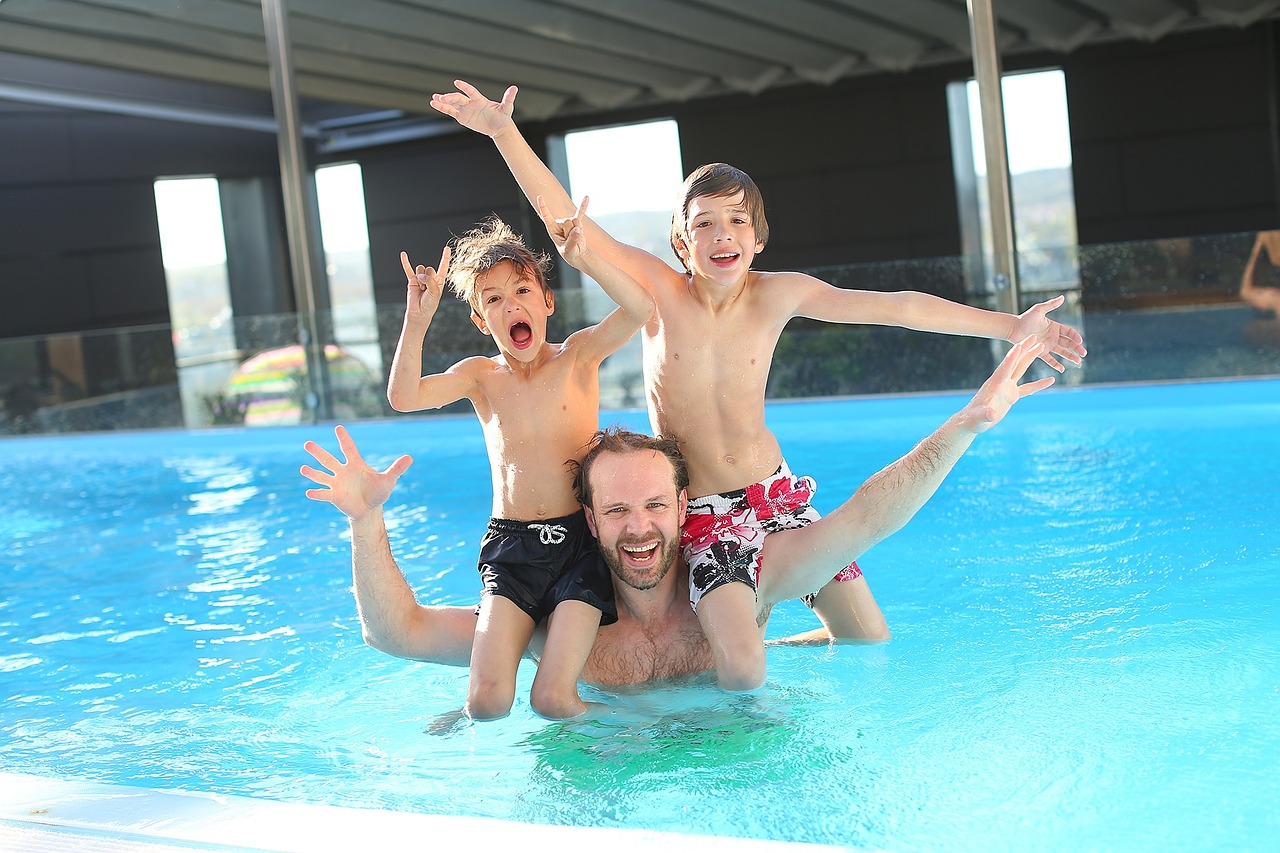Accessible, fun and beneficial for all
Swimming gives you a full-body workout, teaches essential life skills. It can be a fun general activity, or enjoyed as an intense competitive sport. It can be performed year-round, benefitting both body and mind, and can improve your ability in both setting and achieving personal goals.
It doesn’t matter how old you are!
Swimming can be a fun, mentally and physically enhancing, health-boosting activity for infants, children, adults and the elderly. Each age group experiences distinct positive effects that benefit them at their particular stage in life.
Learning to swim as an infant rapidly improves motor skills; coordination, balance, grasping, and catching. Studies have also shown that swimming lessons between the ages of 1-4 dramatically reduce the likelihood of drowning.
For children, swimming is a wonderful confidence builder. Swimming lessons, beaches and public pools are great social environments for children to have fun and be active. Learning essential safety skills in and around water is critical in ensuring a child’s safety in the world at large.
Adults can enjoy swimming as a leisure activity, an essential component of keeping fit and healthy, or as a competitive sport.
Elderly people can be limited in their ability to exercise, because it may be painful for them to walk or run. Swimming is low-impact, sparing the joints, and enhancing range of motion. Ageing can strip back agility, and swimming allows you to regain some of this lost dexterity. Swimming can also improve bone density, which helps fight osteoporosis. This is very important for the elderly, and post-menopausal women particularly.
You don’t have to be an athlete!
You don’t need to be in peak physical fitness to enjoy and perform well in the water. Swimming is an exercise that is easy on the body. It’s a great cardiovascular workout and muscle builder, but because it’s low impact, it doesn’t place added stress your body, and injury risk is very low.
Unlike some sports, a lack of coordination will not significantly affect your ability to have fun in the water, but the act of swimming will improve your skills over time. Swimming engages your motor coordination like no other sport; two thirds of the body’s musculature is involved in the act of swimming. The upper and lower body, torso, arms and legs and head all work together to perform a stroke.
Disability is not a disqualifier!
Individuals with a disability are often limited in opportunities to participate in physical activities. It is very important to lead an active lifestyle to remain healthy, so overcoming these barriers to physical activity is critically important. Water buoyancy allows those with mobility issues to move more freely, and reduces stress on weight-bearing joints. Because joints are protected from strain and pressure in the water, swimming is also wonderful for anyone suffering from arthritis, or recovering from an injury.
As an aerobic activity, swimming strengthens the heart and lungs, and helps to prevent heart disease. One hour of lap swimming can burn up to seven hundred calories, and is a great, low-impact option for people struggling with obesity.
People with allergies, or asthma can also find relief in the pool. Swimming gives you the ability to do vigorous exercise in moist air. This has been shown to reduce asthma symptoms, as the condition is often exacerbated by breathing dry air, causing airways to dry out during exercise. The breath control techniques required in swimming also improve breathing ability and lung health.
It will improve your quality of life, no-matter who you are!
Swimming is for everyone. It is beneficial and enjoyable across the spectrum of age and ability: young and old, pregnant women, people with injuries or physical disabilities. Swimming is an inclusive sport, and has a positive effect on the mental, physical and emotional well-being of those who participate.
Written by: Tess Purling




